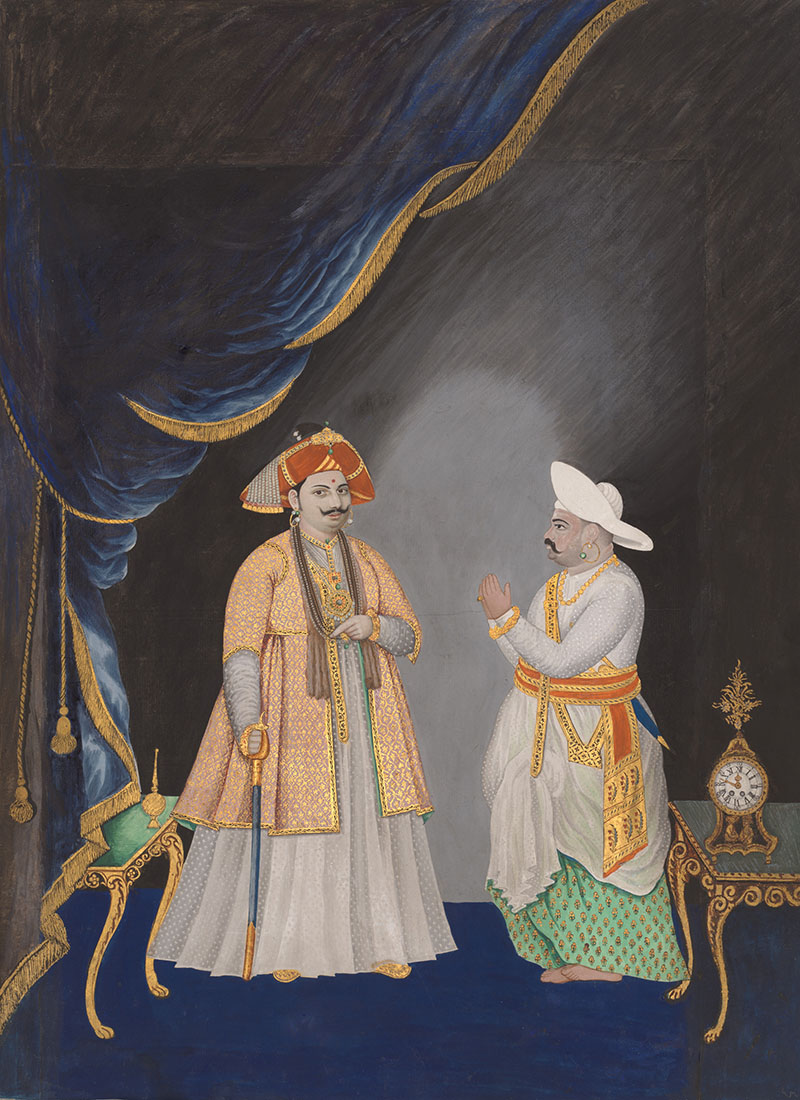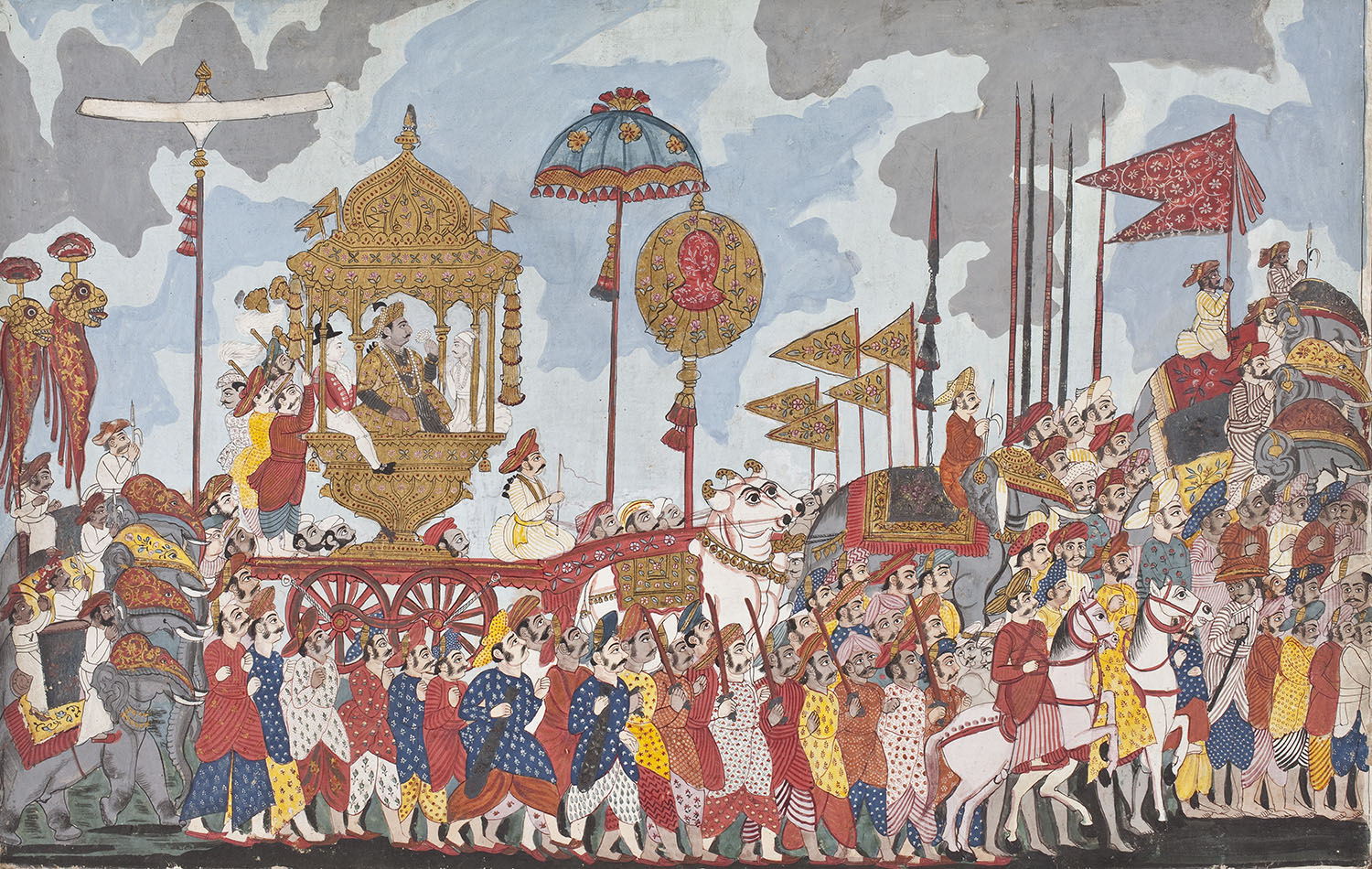ARTICLE
Tanjore Painting
Over the next century, the Thanjavur region increasingly came under British control, leading painters to incorporate techniques from the Company School of painting. The media used changed from ground colours on cloth and wood to gouache and watercolour on paper. The style also began to move beyond the court and reached new markets and classes of patrons. The British commissioned Thanjavur artists for ethnographic illustrations, while some Indian patrons employed them to make drawings of insects, birds and animals.
Simultaneously, Tanjore-style religious paintings also underwent considerable change. Glossy paintings of deities such as Krishna, with cherubic forms and gilded decoration, were produced for a popular market. Owing partly to the influence of Academic Realism from the West, stiff poses gave way to more naturalistic depictions. Expensive gold leaf was still applied to some of these works, while others began to use cheaper gold paper for embossing. Many of these innovations are still used in Tanjore paintings today.
Contemporary Tanjore paintings are large, framed objects meant to be hung on walls and seen from a distance. They are generally executed on wooden panels wrapped in cloth, leading them to be called palagai padam (Tamil for ‘pictures on wood’). The wood of the jackfruit tree is usually preferred for this purpose. A sheet of cardboard is pasted onto the panel using gum sometimes made from tamarind seeds. This is covered with one or two layers of cloth, which is coated with lime and smoothed down using a stone or shell. The painting is done using a brush on this prepared surface, leaving out the places where gems are to be set. These spots are marked with unboiled limestone that is ground and mixed with glue, and gems or stones are directly embedded here, followed by the application of gold leaf or paper. Embossing is achieved by pressing the foil down with the pointed end of a paintbrush. More recent Tanjore paintings bear heavier applications of gold work and a few dark, rich shades of colour. The background colours used include deep greens, blues or reds; the main figures are usually executed in white, yellow, green or blue.
The influence of the Tanjore painting style has had considerable geographic and temporal range. According to some scholars, elements of the style influenced paintings produced as far away as Solapur in Maharashtra as well as various parts of Karnataka in the eighteenth century. Its depiction of deities with a hybrid of South Indian and European styles influenced Realist painters like Raja Ravi Varma, and inspired popular art in the form of prints and calendar paintings through the twentieth century and up to the present day.
Although the tradition of Tanjore painting was historically limited to men of the Kshatriya caste, efforts have been made to open it up to others in recent years. The Tamil Nadu Handicrafts Development Corporation has conducted training courses in Tanjore painting exclusively for women. Tanjore paintings continue to be extremely popular as tourist memorabilia and objects of worship, and are among the most recognisable South Indian paintings today.
Bibliography
Our website is currently undergoing maintenance and re-design, due to which we have had to take down some of our bibliographies. While these will be re-published shortly, you can request references for specific articles by writing to hellomapacademy@map-india.org.








